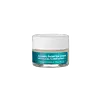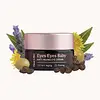What's inside
What's inside
 Key Ingredients
Key Ingredients

 Benefits
Benefits

 Concerns
Concerns

 Ingredients Side-by-side
Ingredients Side-by-side

Water
Skin ConditioningHydrogenated Ethylhexyl Olivate
EmollientGlyceryl Stearate Se
EmulsifyingCaprylic/Capric Triglyceride
MaskingGlycerin
HumectantStearic Acid
CleansingDecyl Oleate
EmollientDimethicone
EmollientSaponaria Pumila Callus Culture Extract
Skin ConditioningPfaffia Paniculata Root Extract
SoothingLilium Candidum Flower Extract
Skin ConditioningAngelica Archangelica Root Water
Skin ConditioningOxycoccus Palustris Seed Oil
AntioxidantRubus Chamaemorus Seed Oil
Skin ConditioningPtychopetalum Olacoides Bark/Stem Extract
Skin ConditioningPolygonum Fagopyrum Seed Extract
Skin ConditioningPerfluorodecalin
Skin ConditioningGossypium Herbaceum
Skin ConditioningHydrolyzed Rice Bran Protein
Skin ConditioningThymus Vulgaris Flower/Leaf Extract
MaskingBuddleja Davidii Extract
Skin ConditioningSimmondsia Chinensis Seed Oil
EmollientHydrogenated Vegetable Oil
EmollientAloe Barbadensis Leaf Juice
Skin ConditioningLaminaria Digitata Powder
Skin ConditioningCeramide NP
Skin ConditioningHydrogenated Olive Oil Unsaponifiables
EmollientCaprylyl Glycol
EmollientCetyl Alcohol
EmollientPhenoxyethanol
PreservativeIsomalt
HumectantAcrylates/C10-30 Alkyl Acrylate Crosspolymer
Emulsion StabilisingPentylene Glycol
Skin ConditioningCaprylyl/Capryl Glucoside
CleansingSodium Hydroxide
BufferingPotassium Sorbate
PreservativeBenzyl Alcohol
PerfumingLecithin
EmollientSodium Benzoate
MaskingSilica
AbrasiveSucrose Palmitate
EmollientXanthan Gum
EmulsifyingWater, Hydrogenated Ethylhexyl Olivate, Glyceryl Stearate Se, Caprylic/Capric Triglyceride, Glycerin, Stearic Acid, Decyl Oleate, Dimethicone, Saponaria Pumila Callus Culture Extract, Pfaffia Paniculata Root Extract, Lilium Candidum Flower Extract, Angelica Archangelica Root Water, Oxycoccus Palustris Seed Oil, Rubus Chamaemorus Seed Oil, Ptychopetalum Olacoides Bark/Stem Extract, Polygonum Fagopyrum Seed Extract, Perfluorodecalin, Gossypium Herbaceum, Hydrolyzed Rice Bran Protein, Thymus Vulgaris Flower/Leaf Extract, Buddleja Davidii Extract, Simmondsia Chinensis Seed Oil, Hydrogenated Vegetable Oil, Aloe Barbadensis Leaf Juice, Laminaria Digitata Powder, Ceramide NP, Hydrogenated Olive Oil Unsaponifiables, Caprylyl Glycol, Cetyl Alcohol, Phenoxyethanol, Isomalt, Acrylates/C10-30 Alkyl Acrylate Crosspolymer, Pentylene Glycol, Caprylyl/Capryl Glucoside, Sodium Hydroxide, Potassium Sorbate, Benzyl Alcohol, Lecithin, Sodium Benzoate, Silica, Sucrose Palmitate, Xanthan Gum
Water
Skin ConditioningAloe Barbadensis Leaf Juice
Skin ConditioningCarthamus Tinctorius Seed Oil
MaskingGlycerin
HumectantHelianthus Annuus Seed Oil
EmollientStearic Acid
CleansingGlyceryl Stearate
EmollientCetyl Alcohol
EmollientStearyl Alcohol
EmollientAlgae Extract
EmollientTaraxacum Officinale Extract
Skin ConditioningCarbomer
Emulsion StabilisingXanthan Gum
EmulsifyingSodium Carbomer
Emulsion StabilisingNiacinamide
SmoothingSqualane
EmollientPalmitoyl Tripeptide-1
Skin ConditioningCaffeine
Skin ConditioningTocopheryl Acetate
AntioxidantEscin
TonicButylene Glycol
HumectantAlcohol
AntimicrobialLecithin
EmollientCentella Asiatica Extract
CleansingPalmitoyl Tetrapeptide-7
Skin ConditioningPolysorbate 20
EmulsifyingSodium Hyaluronate
HumectantPotassium Phosphate
BufferingPhenoxyethanol
PreservativeGlyceryl Stearate Citrate
EmollientLavandula Angustifolia Oil
MaskingEthylhexylglycerin
Skin ConditioningGeranium Maculatum Extract
TonicCamellia Sinensis Leaf Extract
AntimicrobialWater, Aloe Barbadensis Leaf Juice, Carthamus Tinctorius Seed Oil, Glycerin, Helianthus Annuus Seed Oil, Stearic Acid, Glyceryl Stearate, Cetyl Alcohol, Stearyl Alcohol, Algae Extract, Taraxacum Officinale Extract, Carbomer, Xanthan Gum, Sodium Carbomer, Niacinamide, Squalane, Palmitoyl Tripeptide-1, Caffeine, Tocopheryl Acetate, Escin, Butylene Glycol, Alcohol, Lecithin, Centella Asiatica Extract, Palmitoyl Tetrapeptide-7, Polysorbate 20, Sodium Hyaluronate, Potassium Phosphate, Phenoxyethanol, Glyceryl Stearate Citrate, Lavandula Angustifolia Oil, Ethylhexylglycerin, Geranium Maculatum Extract, Camellia Sinensis Leaf Extract
Alternatives
Ingredients Explained
These ingredients are found in both products.
Ingredients higher up in an ingredient list are typically present in a larger amount.
Aloe Barbadensis Leaf Juice comes from leaves of the aloe plant. Aloe Barbadensis Leaf Juice is best known for helping to soothe sunburns. It is also anti-inflammatory, moisturizing, antiseptic, and can help heal wounds.
Aloe is packed with good stuff including Vitamins A, C, and E. These vitamins are antioxidants, which help fight free-radicals and the damage they may cause. Free-radicals are molecules that may damage your skin cells, such as pollution.
Aloe Barbadensis Leaf Juice also contains sugars. These sugars come in the form of monosaccharides and polysaccharides, folic acid, and choline. These sugars are able to help bind moisture to skin.
It also contains minerals such as calcium, 12 anthraquinones, fatty acids, amino acids, and Vitamin B12.
Learn more about Aloe Barbadensis Leaf JuiceCetyl Alcohol is a fatty alcohol. Fatty Alcohols are most often used as an emollient or to thicken a product.
Its main roles are:
Though it has "alcohol" in the name, it is not related to denatured alcohol or ethyl alcohol.
The FDA allows products labeled "alcohol-free" to have fatty alcohols.
Learn more about Cetyl AlcoholGlycerin is already naturally found in your skin. It helps moisturize and protect your skin.
A study from 2016 found glycerin to be more effective as a humectant than AHAs and hyaluronic acid.
As a humectant, it helps the skin stay hydrated by pulling moisture to your skin. The low molecular weight of glycerin allows it to pull moisture into the deeper layers of your skin.
Hydrated skin improves your skin barrier; Your skin barrier helps protect against irritants and bacteria.
Glycerin has also been found to have antimicrobial and antiviral properties. Due to these properties, glycerin is often used in wound and burn treatments.
In cosmetics, glycerin is usually derived from plants such as soybean or palm. However, it can also be sourced from animals, such as tallow or animal fat.
This ingredient is organic, colorless, odorless, and non-toxic.
Glycerin is the name for this ingredient in American English. British English uses Glycerol/Glycerine.
Learn more about GlycerinLecithin is a term for a group of substances found in the cell membranes of plants, animals, and humans. They are made up of mixture of phospholipids.
This ingredient has emollient and emulsifying properties.
As an emollient, lecithen helps soften the skin and creates a barrier to keep moisture in.
As an emulsifier, it also helps prevent water and oil ingredients from separating. Lecithin can also help ingredients be better absorbed by the skin.
This is because the phospholipids in lecithin produce liposomes. Liposomes help other ingredients get through the skin barrier.
Depending on the source of this ingredient, lecithin may not be fungal acne safe. This is because some sources of lecithin come from soybean oil, which may feed the malassezia yeast that feeds fungal acne.
We recommend reaching out to the brand you are purchasing from to inquire about the source of their lecithin.
Some other names for this ingredient include soy lecithin and deoiled soy lecithin.
Learn more about LecithinPhenoxyethanol is a preservative that has germicide, antimicrobial, and aromatic properties. Studies show that phenoxyethanol can prevent microbial growth. By itself, it has a scent that is similar to that of a rose.
It's often used in formulations along with Caprylyl Glycol to preserve the shelf life of products.
Stearic Acid is a fatty acid. It is an emollient, emulsifier, and texture enhancer.
As an emollient, stearic acid helps soften skin. It aids the skin's protective barrier by preventing water loss. It also provides a gentle cleansing effect without stripping away natural oils.
Stearic acid may also be used to enhance the texture of products. It can add volume and stabilize ingredients such as water and oil. This can help water and oil ingredients from separating.
Sources of stearic acid include animal or vegetable fats/oils such as coconut or shea. It can be naturally found in butter, cocoa butter, shea butter, vegetable fats, and animal tallow.
This ingredient may not be Malassezia folliculitis, or fungal-acne safe.
Learn more about Stearic AcidWater. It's the most common cosmetic ingredient of all. You'll usually see it at the top of ingredient lists, meaning that it makes up the largest part of the product.
So why is it so popular? Water most often acts as a solvent - this means that it helps dissolve other ingredients into the formulation.
You'll also recognize water as that liquid we all need to stay alive. If you see this, drink a glass of water. Stay hydrated!
Learn more about WaterXanthan gum is used as a stabilizer and thickener within cosmetic products. It helps give products a sticky, thick feeling - preventing them from being too runny.
On the technical side of things, xanthan gum is a polysaccharide - a combination consisting of multiple sugar molecules bonded together.
Xanthan gum is a pretty common and great ingredient. It is a natural, non-toxic, non-irritating ingredient that is also commonly used in food products.
Learn more about Xanthan Gum